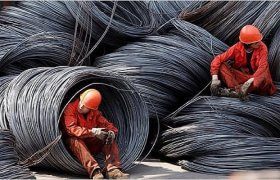Fastmarkets’ Ferrous Analytics report helps subscribers keep track of hot metal costs and steel production spreads in China, along with key pricing components of the steelmaking raw materials supply chain in Asia.
The generous steelmaking margins enjoyed by Chinese steelmakers in recent months have eased amid resurgent hot metal costs. Margin proxies for rebar producers shrunk by 376.77 yuan per tonne in May on a daily average basis to 434.29 yuan per tonne, although hot-rolled coil producers still made 968.04 yuan per tonne. Steelmaking spreads against hot metal also softened, with the rebar-hot metal spread falling by $22.75 per tonne to $205.57 per tonne on a daily average basis, while the HRC-hot metal spread fell by $16.94 per tonne to $279.05 per tonne.
This is largely due to the rising cost of producing hot metal, which increased by $66.34 per tonne to $524.40 per tonne on a daily average basis. Steel prices also rose on average but were capped by frantic selling after Chinese Premier Li Keqiang cautioned against high commodity prices. Promises of more government action to cool overheated markets added to the weaker sentiment.
Sustained demand for high-grade iron ore fines, coupled with weaker demand for sinter-feed concentrate due to sintering restrictions in China, led to concentrate being sold at a discount of $5.35 per tonne, compared with near parity, while falling scrap prices caused the billet-scrap spread to increase by $31.14 per tonne to $207.82 per tonne. Chinese demand has supported billet prices.
Analyst Comments
The fact that government intervention in China against “commodities” is having a bigger effect on finished steel than raw materials suggests that fundamentals for the former are beginning to slacken after the tightening we detailed through April. The negative pricing environment has not been lost on steel consumers elsewhere, with steelmakers revealing that panic-buying characteristics in Europe for example are starting to diminish.
With premiums for billet, high-grade iron ore, and prime scrap (Shindachi) all rising at the same time, however, this downstream slackening is yet to be felt in the raw materials markets. Demand for raw materials is not only firm in China, but reviving rapidly almost everywhere else, with even bidding wars observed from coal to direct-reduced iron. Until steel production retreats, the resistance to raw materials will be limited by net margins, which, for Chinese spot sellers, remain comparatively high. Nevertheless, early indications from the China Iron & Steel Association that iron and steel production among its members slowed further in May, suggests it may not be long before raw materials prices also come under pressure from falling demand.
این مطلب بدون برچسب می باشد.












ثبت دیدگاه